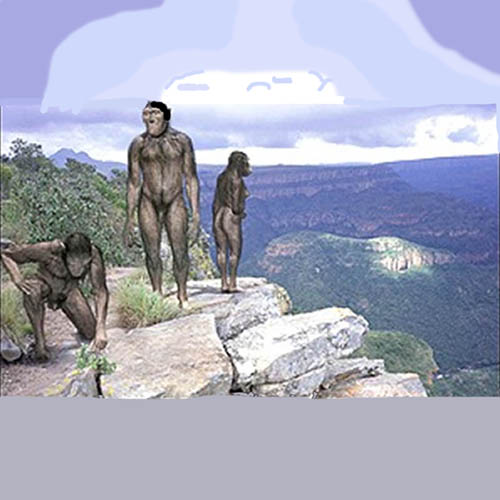Mrs P's Science Links
Sciences
Challenger Learning Center:

E-Missions Virtual Science Field Trips |
NASA: 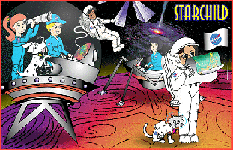
Starchild Learning Center for Young Astronauts |
K-12 Science Education

Jefferson Lab | Colliding Black Holes |

Color Animals and Plants |
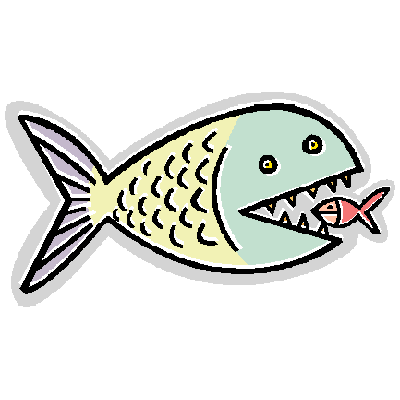
Predator and Prey |
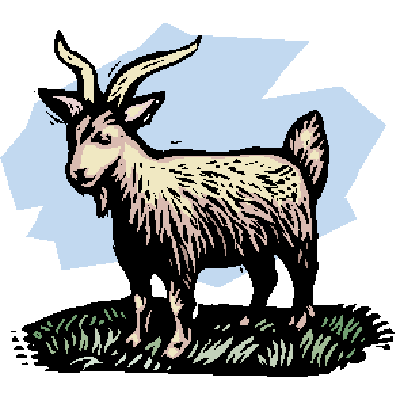
What's on the Menu?Carnivore, Herbivore, Omnivore |

Colors of Humans |
| Colors of the Rainbow | Light Color Spectrum | ElementsCharts of Properties |
Properties
Life Cycles
Student will investigate and understand basic needs and life processes of Plants/Animals.
| ||||||
Ideas | ||||||
| The Lion King Movie | Plant Zinnias in classroom window in individual cups. | Set Up Terrarium in large glass jar. | Make Frog Jumper | Colors of Humans - Compile data and print out graphs | Sim Park - Create park with student choices, and have students explain outcomes. | |
| Life Cycle Lessons 1-5 with Webquest | Life Cycles and more |
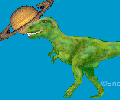 Enchanted Learning
Enchanted Learning
Life Cycle Printouts |
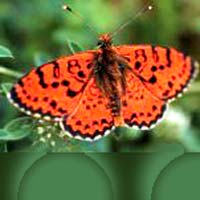 |
Butterfly Web Cams --- Metamorphosis of the Monarch Butterfly |
A Butterfly in Transition slideshow Four Stages of Butterfly Metamorphosis |
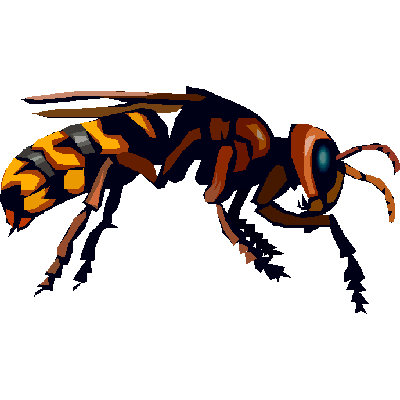 Honeybee Metamorphosis
Honeybee Metamorphosis |
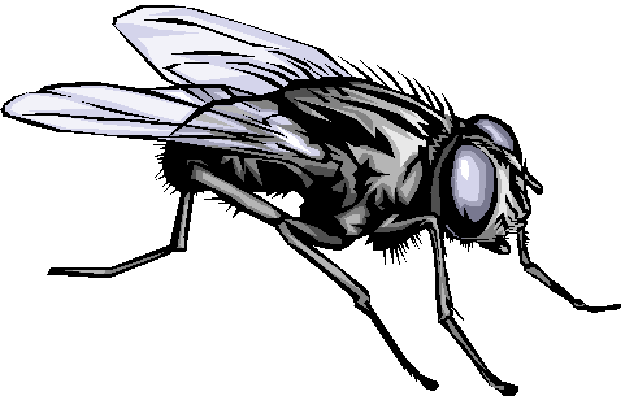
Metamorphosis of Flies Life Cycle of a House Fly |
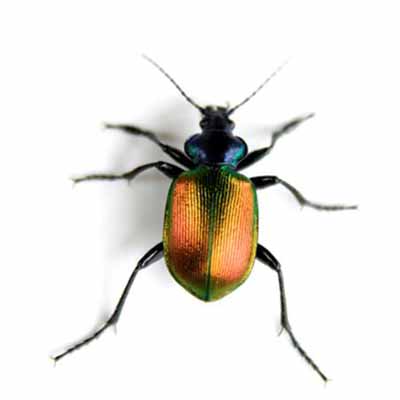
The Mealworm Grow your own beetles |
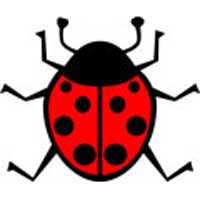
| A Class Raises Ladybugs | Life Cycle of a Ladybug |
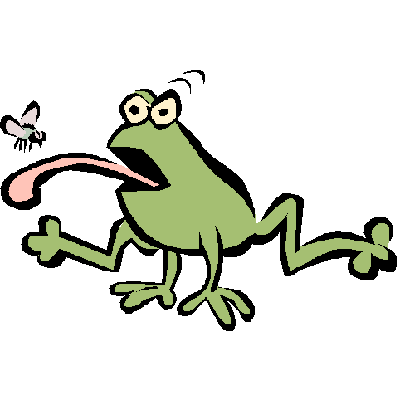 |
Frogwatch Tadpole to Frog Life Cycle of a Frog |
Crayola:
Tadpole to Frog Lesson Jumping Frog print and play |
Weather
|
Google Earth Engine Timelapse Satellite Views |
The Weather Channel The Weather Dude |

Temperature Spreadsheet 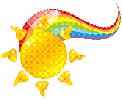
Weather Spreadsheet |
| Make Paper Snowflakes |
Snow Rollers a unique weather phenomena |
Thunderstorms and Volcanos Pictures |
Mrs. P's Physics Links

Fun Paper Airplanes Print, Fold, Trim and Fly |
2D Physics Phunbox | Toilet Bowl Science< | Colliding Black Holes |
| World Clock |

Pamukkale Rock Formation In Turkey |
Roller Coaster Physics | Physics Games.Net |
Energy
Light .... Wind
| KiteGen Generate electricity using kites on the wind. |
Energy Kite Systems Tap into upper atmosphere wind |
|

Rainbows! |
Make an Online Kaleidoscope
|
|

Electro-Magnetic Light Spectrum Light and Color |
Alternative Energy Sources | Make a Color Spinner |
Matter
| Matter is Stuff | Matter Lab Activity | States of Matter Solid - Liquid - Gas | States of MatterSolid Liquid Gas |
| Solids | Liquids | Gases |
|
Matter Change of State Physical - Chemical |
Evaporation | Plasmas |
| BE Condensates | ||
| Mixture Basics | More Mixtures | Mixtures Around You |
| Solutions | Make Liquid Nitrogen Ice Cream |
Element Flash Cards With Game Directions | Compounds and Molecules |
Elements
| Elements Chart | Shepherd Software:  Elements Games
Elements Games |
 Elements Lesson
Elements LessonAtoms Lesson |
The Atoms Family |
Jefferson Lab:  Element Flash Cards
Element Flash CardsIt's Elemrntal Element Balancing Game |
Periodic Videos | Jefferson Lab:  Virtual Tour of Jefferson Lab
Virtual Tour of Jefferson LabAtoms Tour Looking for the Top Quark Quarks Coloring Book |
Print Periodic Table |
Earth Science
| National Geographic for Kids | World-O-Meter |
E-Missions Virtual Science Field Trips |
The Dynamic Earth Earth Plate Tectonics |
|
| When the compass points South! |
 Pamukkale
PamukkaleRock Formation in Turkey |
The Demise of Easter Island | Lesson of the Ancient Nazcas: Deforestation in western Peru | The Solstices |
Space Links
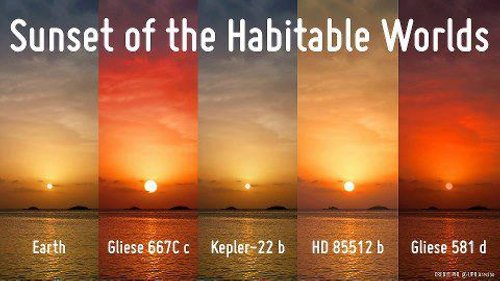
Sunset of the Habitable Worlds |
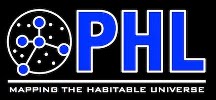
Planet Habitability Laboratory | ||||
| A Trip To The Moon Youtube |

View Earth from Space |

Night lights on Earth from Space |
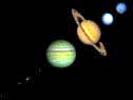
Nine Planets Virtual Tour |
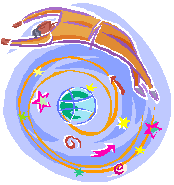
E-Missions Virtual Science Field Trips |
|
Nasa Sites | |||||

Nasa: Starchild Elementary |
Hands On Universe middle/high students |
Nasa: Imagine High School+ | |||
Exciting Space Clips on Youtube | |||||

Experiencing the Universe ! |

Apollo 11 Moon Landing |

The Hubble Deep Field |

Astroids Slam Into the Sun |

The Song of the Sun |
Summer and Winter Solstices |
News on Outer Space | |||||

Martian SheenNews Article |

JupiterWorldbook |

Jupitor ChangingNews May 2010 |
|||
MEASUREMENT is a Scientific Process
Live Science |
|
Matter can be visible or not, but it can always be measured. Matter has mass and volume. |
Mass means something has weight. |
 |
Volume means something takes up space. |
A Different Way of Measuring Matter |
Make Your Own Measuring Rods
| "Cuisionaire Rods" sets for a classroom are costly. But, with precision measurement and an easily handled electric cutting tool, they can be made from dowel sticks in sufficient quantities for all children to have enough sets to use in the classroom, and perhaps another set to use at home. A 1/2" dowel will be sufficient, but a larger diameter dowel may be better for small hands. The larger dowels will require more storage space. | |||
| The success of these measuring rods depends on the precise measurement so that four white rods are the exact same length as one green rod, a yellow and a white road exactly equal a green rod, two red rods exactly equal a green rod, two white rods exactly equal a red rod, a red rod and two white rods equal a green rod, a red rod and a white rod equal a yellow rod. and a red rod and a white rod exactly equal a yellow rod. | |||
| The green rods should be 8" long. After cutting the 8" rods, sand as needed. Check for precise length | The yellow rods should be 6" long. After cutting the 6" rods, sand as needed. Check for precise length | The red rods should be 4" long. After cutting the 4" rods, sand as needed. Check for precise length. | The white rods should be 2" long. After cutting the 2" rods, sand as needed. Check for precise length |
| Sort rods by size, and apply paint. A spray acrylic may be the best choice.
After painting check length again for precision. Sand as needed. Allow all rods to dry thoroughly and combine them into sets, one set for each student in the class. Put each set in a sturdy box. | |||
| Print these color-coded measuring sticks on white cardstock. Cut them out on the black lines, and measure to be sure they are equivalent sizes when cut. Laminate as desired. Print enough sets so that each student will have enough measuring sticks to complete desired activities. Measuring stick sets can be stored in envelopes between use. | |||
| |||
| |||
| |||
|
Mrs. P's Biology Links
Biology is the branch of science which studies living things.Biology is the study of plants, animals, and human beings, and the environments in which living beings live. | |||
Biology is the scientific study of life.Biology examines the structure, function, growth, origin, evolution, and distribution of living things. It classifies and describes organisms, their functions, how species come into existence, and the interactions they have with each other and with the natural environment. | |||

Biology Coloring Pages |
Biology 4 Kids | Wikipedia: Biology | |
 Plant-Animal Sort Game
Plant-Animal Sort Game |
|

Introduction to Taxonomy |
|
| Have You Ever Seen a Panda Bear Grow? | Animal Bytes: The Giant Panda | ||
TaxonomyClassification of Plants and Animals | |||
Plant Kingdom ........ Animal Kingdom | |||
Phylum |
Cordata | Arthropod | |
Class |
Mammal | Insect | |
Cells | |||
 Cells
Cells |

Mitosis |
 Meiosis
Meiosis |

Plant and Animal Cell Tutorials |
 Martian Sheen - Life on Mars?
Martian Sheen - Life on Mars? |
|||
Plant Pages

The Tree of Life Phylogeny |
 Spring Garden Flowers
Spring Garden Flowers |
 Winter Garden Flowers
Winter Garden Flowers |
 Make a Garden
Make a Garden |
 Virtual Farm
Virtual Farm |
Cabbage | Cotton Tobacco Pointsettas |
|
 Winter Blooms
Winter Blooms |
 Spring Blooms
Spring Blooms |
HaPPy FRESH Garden Video by YooNok Kim |
Animals
Mrs P's Animal Links
Animalia
The Animal KingdomCharacteristicsAnimals have several characteristics that set them apart from other living things. Animals have complex cells and lack rigid cell walls, and they are made of many cells. They are eat other organisms. All animals can move on their own. StructureAnimals usually have bodies made up of separate tissues. These include muscles and nerves. Usually there is an stomach with one or two openings. All animals have cells that can be calcified to form bones or shells. Animals also have different types of junctions between cells. Reproduction and DevelopmentNearly all animals undergo some form of mating to create babies. They have a few specialized reproductive cells which develop into new individuals. Many animals are also lay fertile eggs that do not require mating. Food and Energy SourcesAll animals feed directly or indirectly on other living things. They are often further subdivided into groups such as carnivores, herbivores, omnivores, and parasites. Predation is a biological interaction where a predator (a hunter) feeds on its prey (the animal that is attacked). Predators may or may not kill their prey prior to feeding on them, but the act of predation always results in the death of the prey. Most animals feed indirectly from the energy of sunlight. When animals eat plants or eat other animals which have eaten plants the sugars produced by the plant are used by the animal. They are either used directly to help the animal grow, or broken down, releasing stored solar energy, and giving the animal the energy required for motion. |
Animal Kingdom Links
|
The New Arguments Against Evolution Pamphlet 2012 |
Kidport: The Animal Kingdom | Extreme Science: Animal Kingdom | Disney: Animal Kingdom Theme Park |
Animal Classification
Animal Activities and Links
| Absolutely Brilliant Animal Photos |
Bird Tubing on Roof Youtube |
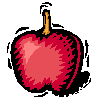 Plant-Animal Sort Game
Plant-Animal Sort Game |
 Animal Classification Game
Animal Classification Game |
|
|
 Animal Habitats
Animal Habitats |
 Underwater
UnderwaterSlideshow |
Nocturnal Frogs in Costa Rica Slide Show Game | Gibbon Taunts Tigers! Funny Video |
 Song of the Eastern Bluebird
Song of the Eastern Bluebird |
 Predator and Prey Lesson Resources
Predator and Prey Lesson Resources |
 Are you my Dinner?
Are you my Dinner?Class Game |
 Predator and Prey Card Games
Predator and Prey Card Games |
 Predator and Prey Domino Game
Predator and Prey Domino Game |
||
 What's On the Menu?
What's On the Menu? |
 Animal Print-Outs
Animal Print-Outs |
Animal Classes
Amphibians
Animals that spend part of their life in water and part on land. Amphibians have interesting life cycles.
 |
 |
 |
 |
 |
 |
 |
Birds
Animals with wings although not all birds actually fly.
Birds lay eggs and care for their babies.
 |
 |
 |
 |
 |
 |
||
 |
 |
 |
 |
 |
 |
 |
 |
 Eastern Bluebird
Eastern Bluebird |
 Audubon's Birds
Audubon's Birds |
 Magnificant Owls
Magnificant OwlsSlideshow |
Mammals
Warm blooded animals that give birth to live offspring. Mammels care for their young.
 |
 |
 |
 |
 |
 |
 |
 |
 |
 |
 |
 |
 |
 |
Animal Kingdom: Mammal
Class: Primate Order
The Primate Order countains lemurs, monkeys, and apes. The apes include Humans. Humans have spread the Primate Order to all continents of the world, but the non-human primates live primarily in warm regions such as Central and South America, Africa, and South Asia. Primates have been on earth for at least 65 million years.

Primates
| Wikipedia: Primates |
Reptiles
Cold blooded animals usually with scaley skins. They lay eggs, but do not care for their young.
 |
 |
 |
 |
 |
 |
 |
Fish
Animals with backbones that live in water.
They lay eggs but do not care for their young.
 |
 |
 |
 |
 |
 |
 |
Sea Creatures
Animals that live in the sea and do not have a backbone
 |
 |
 |
 |
 |
 |
 |
Sea Life
The following are underwater pictures taken in Sydney Harbor, Australia. If you can identify any of the creatures pictured here, please send the number and name to weezo45@gmail.com . Thanks.
 1.
1. |
 2. Sting Ray
2. Sting Ray |
 3.
3. |
 4.
4. |
 5.
5. |
 6.
6. |
 7.
7. |
 8. Coral Fish
8. Coral Fish |
 9. Rock Cod
9. Rock Cod |
 10. Box Jellyfish
10. Box Jellyfish |
 11.
11. |
 12. Sea Horse
12. Sea Horse |
 UnderwaterPowerpoint
UnderwaterPowerpoint |
 13. Australian Potbellied Seahorse
13. Australian Potbellied Seahorse |
 14. Sea Urchin
14. Sea Urchin |
Insects and Bugs
Small animals with segmented bodies. Insects may have hard shells, but have no back bone.
 |
 |
 |
 |
 |
 |
 |
Farm Animals
Farm Animals have been domesticated by man.
|
Web Links for farm animals
|
Extreme Sheep visual effects of sheep and lights |
Goat goes Sheep Surfing |  |
 |
Farmville Game on Facebook |
 Rachel's Horses
Rachel's Horses |
Animal Resources
Animal Behavior
Primate Behavior
| Wikipedia: Primates |
 Song of the Eastern Bluebird
Song of the Eastern Bluebird |
The Eastern Blue Bird
Animals
Human
Anatomy - Psychology - Physiology - Nutrition - Medicine
| Anatomy of the Brain |
Evolution of the Brain Flash Explanation |
 Brain Science Coloring Book
Brain Science Coloring Book |
Neuro-Science for Kids | TheTriune Brain | |
 Inner Body - Human AnatomyWeb Site
Inner Body - Human AnatomyWeb Site |
Anatomy Arcade Games human body. |
The Human Spark (PBS) |
 Make Me Babies
Make Me BabiesPhoto Progression |
 Colors of Humans
Colors of HumansSpreadsheet Group Activity |
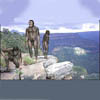 Hominids and Early ManLinks Index
Hominids and Early ManLinks Index |
Human Food and Nutrition
| The Amazing Cucumber | HaPPy Beet Noodles by YooNok Kim |
Pemberton Cookbook Anne and Steve Pemberton |
Nutrition Official Government site |
Farmers Market Seasonal Foods My Own Books |
 Colors of Humans
Colors of Humans |
 Make Me Babies (Photo Progression)
Make Me Babies (Photo Progression) |
Habitat
| GoogleEarth EngineSatelite Timelapse Views |
 Rainforest 1
Rainforest 1 |
 Rainforest 2
Rainforest 2 |
 The Magic of Sydney Harbor
The Magic of Sydney Harbor |
 Sea Dwellers
Sea Dwellers |

Underwater |

Are You My Dinner? Game |

Sim Park |
Mrs. P's Science Printables
Predator and Prey
 Predator and Prey Lesson Plan
Predator and Prey Lesson Plan |
 Predator and Prey Resources
Predator and Prey Resources |
 Predator and Prey Picture Tiles
Predator and Prey Picture Tiles |
 Predator-Prey Dominos
Predator-Prey Dominos |
 Predator-Prey Card Games
Predator-Prey Card Games |
 Are You My Dinner? Classroom Game
Are You My Dinner? Classroom Game |
Computer Science
CodeAcademy
|
Games
 Sim Park GameMake a Park, add plants and animals, and see what happens!
Sim Park GameMake a Park, add plants and animals, and see what happens! |
 Virtual Villagers
Virtual Villagers |

Spore Game |

Venture Artic |
 Zoo Tycoon Game
Zoo Tycoon Game |
 Wildlife Tycoon: Venture Africa
Wildlife Tycoon: Venture Africa |
 Fish Tycoon
Fish Tycoon |
 Plant Tycoon
Plant Tycoon |
Hominids and Early Man
 Lucy: A very famous hominid found in Ethiopia in 1971. Lucy lived some 3 million years ago.
When Lucy was alive, there were no humans on Earth as yet. But there were lots of other Hominids around!
Lucy: A very famous hominid found in Ethiopia in 1971. Lucy lived some 3 million years ago.
When Lucy was alive, there were no humans on Earth as yet. But there were lots of other Hominids around! |
NEWS!! Lucy Wasn't Alone! | Human Migratory Patterns |
Hominids and Early Man
Ardipithecus
The oldest known hominid species is
Ardipithecus. |
| NEWS!! Lucy Wasn't Alone! |
Australopithecus
The Homo Species Emerges
Homo Ergaster |
Homo HabilisHomo Habilis lived on earth from 2.5 to 1.5 million years ago. |
Homo ErectusHomo Erectus lived on earth from almost 2 million years until 500,000 years ago. There were still Homo Habilis around when Homo Erectus began to appear. Homo Erectus had a much larger brain than Homo Habilis, and smaller teeth. |
Homo Sapiens ArchaicHomo Sapiens Archaic lived from 500,000 to 200,000 years ago.He had a larger brain than Homo Erectus. |
Homo Sapiens Neanderthalis
Homo Sapiens Neanderthalonsis seems to have developed from the Homo Erectus in Europe and the Middle East. |
Homo Sapiens Cro-MagnonHomo Sapiens Cro-Magnon emerged about 120,000 years ago.Cro-Magnon Man spread out around the world. He was tribal, clever, and made interesting uses of his environment. He developed increasingly complex civilizations. |
Kennewick Man Kennewick Man Found on the bank of the Columbia River near Kennewick, Washington.
Kennewick Man Found on the bank of the Columbia River near Kennewick, Washington.He lived between 5,000 and 9,500 years ago. |
||||||||||
| Smithsonian: Homo Neanderthal | Crystal Links
What did Neanderthals look like |
Answers in Genesis
Changing Picture of Neanderthal Man |
Smithsonian:
Homo Sapiens |
|||||||||||||
| Cro-Magnon Man and Elephants | InfoPlease:
Cro-Magnon Humans |
CSI Stone Age: Did Humans kill Neaderthals? Did Humans kill Neanderthals? | Cro-Magnon and Neaderthal Man
Did they Interbreed? |
|||||||||||||
| Timeline of Human Innovations | Human Migratory Patterns | Mastery Maze Podcast:
Early Manaudio-reviews |
Archeology Tools for Kids http://www.ehow.com/list_6715862_archaeology-tool s-kids.html | Dr Toy: Toy History Timeline http://www.drtoy.com/toy_history/toy_history_timeline.html | Prehistoric Toys Time Line http://www.toystimeline.com/prehistoric/prehistoric-toys/ | Dr Katherine Bolman:
Toys from the Indus Valley |
||||||||||
| African Creation Stories http://www.crystalinks.com/africacreation.html | Recent Developments in Anthropaleology: http://www.talkorigins.org/faqs/homs/recent.html#mille | Institute For The Science of Origins;Case Western Reserve Universiy http://www.case.edu/origins/index.html | Potassium-Argon Dating of Mineral Deposits around Fossils http://en.wikipedia.org/wiki/K%E2%80%93Ar_dating |
Timeline for Evolution on Earth http://en.wikipedia.org/wiki/Timeline_of_evolution |
Human Evolution: http://www.onelife.com/evolve/manev.html |
Fossil Hominids: The Evidence for Human Evolution http://www.talkorigins.org/faqs/homs/%20 |
Answers in Genesis God and Evolution |
Hominid Evolution http://fhs-bio-wiki.pbworks.com/w/page/24003004/Hominid-evolution | Hominid Species http://www.corante.com/loom/archives/026745.html | Fossil Species: http://www.snowcrest.net/goehring/a2/primates/fossils.htm#specie | Hominid Species: http://www.talkorigins.org/faqs/homs/species.html | A Catalog of Hominid Species: http://www.cartage.org.lb/en/themes/Sciences/Paleontology/Paleozoology/FossilHominids/Humankind/Humankind.htm | Hominid Timeline: http://www.talkorigins.org/faqs/homs/species.html#timeline | Prominant Hominid Fossils: http://www.talkorigins.org/faqs/homs/specimen.html#er1470 | What did early hominids eat? What did early African hominids eat | Diet of early hominids: Hominid Behavior |
| The scientific controversy of Indonesian Hobbits: http://www.talkorigins.org/faqs/homs/flores.html | Island of the Lost Hominids: http://www.corante.com/loom/archives/026745.html | History of Homo Sapiens: http://www.historyworld.net/wrldhis/PlainTextHistories.asp?historyid=ab12 | ||||||||||||||
| date | Charles Darwin | On The Origin of Species | First book on evolution. | |||||||||||||
| date | Henry Huxley | Evidence of Man's Place in Nature | Introduction to the evolution of man. | |||||||||||||
| 1871 | Charles Darwin | The Descent of Man | Looking for man's ancestors among chimpanzies and gorillas in Africa. |
Timeline for Hominids and Early Man
Miocene Era22 million years ago until 5.5 million years ago | |||||
| DATES | SPECIES | SPECIMEN | LOCATION | FINDER & DATE FOUND | CHARACTERISTICS |
| 20 million years ago | Apes - hundreds of species | Many | All | Many | U shaped jaw large, parallel teeth sharpened incisors thin tooth enamel large canines quadroped; arborial primarily vegetarian |
| 7-8 million years ago | Ramapithecus punjabicus | apes | Siwalik Hills, Northern India | 1930's by G. Edward Lewis | Thick tooth enamel, small canine |
| 7-8 million years ago | Sivapithecus | Apes - Ancester to Orangutans | Northern Pakistan | 1940-60 - various | Thick tooth enamel, typical ape traits |
Plesticine 5.5 million years ago until now | |||||
| DATES | SPECIES | CHARACTERISTICS |


 ..
.. 
 ..
..  ..
.. 
 Under the Spell of Spiders!
Under the Spell of Spiders! 
 Magic of Sydney Harbor
Magic of Sydney Harbor Eastern Bluebird
Eastern Bluebird  All For Tigers
All For Tigers Bears of Yellowstone
Bears of Yellowstone Audubon's Birds
Audubon's Birds The Whole Frog Project
The Whole Frog Project


 Magnificant Owls
Magnificant Owls Baby Reptiles in Australia
Baby Reptiles in Australia  Bears of Yellowstone
Bears of Yellowstone All For Tigers
All For Tigers Primates
Primates The Whole Frog Project
The Whole Frog Project Revered and Reviled - Herps
Revered and Reviled - Herps Baby Reptiles in Australia
Baby Reptiles in Australia  Sealife
Sealife Magic of Sydney Harbor
Magic of Sydney Harbor Whelk
Whelk Under the Spell of Spiders!
Under the Spell of Spiders!  Animal Kingdom
Animal Kingdom What's On the Menu?
What's On the Menu? Animal Classes
Animal Classes Animal Print-Outs
Animal Print-Outs Animal Classification Game
Animal Classification Game Predator and Prey Pictures
Predator and Prey Pictures Bird Pictures
Bird Pictures Fish and Sea Creature Pictures
Fish and Sea Creature Pictures Insect Pictures
Insect Pictures Mammal Pictures
Mammal Pictures Reptile, Amphibian and More Pictures
Reptile, Amphibian and More Pictures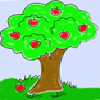 Print and Color Pages - Animals and Plants
Print and Color Pages - Animals and Plants Measurement Tools
Measurement Tools Shape and Color Picture Set
Shape and Color Picture Set Make your own Snowflakes
Make your own Snowflakes Shape and Color Spreadsheet
Shape and Color Spreadsheet